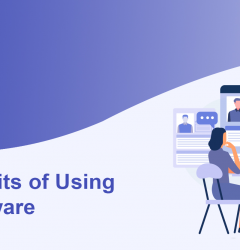12 Jul

Did you know? In the United States, 80.4 million people over 16 and older were paid on an hourly basis.
Are you having trouble with how you’re currently scheduling your staff? Do you think the employees should make better use of their office time and arrive at work with a more positive mindset? Most probably, you’ve heard of the term “shift bidding” and are interested in learning more about it, as well as if it may help you enhance staffing efficiency and whether it increases employee satisfaction.
Table of Contents
What is Shift Bidding?
Employers no longer need to ask about employees’ availability for work at the beginning of each pay period due to shift bidding. The most effective method to accomplish this is with scheduling software that incorporates the employer’s input about what can be done and by whom. The software then gives the employees a voice command to ask for the shifts they are free to work.
Employees can define the hourly rate they are willing to get paid for the shifts they choose in some shift bidding systems. As a result, employers choose to hire the employee who offers the lowest rate.
The scheduler can offer the requirements for filling any specific shift whenever needed. The scheduler can specify requirements for a particular shift, such as requesting a specialist to work that shift. This will stop the system from assigning a worker who is unqualified for the position.
The scheduler notifies everyone of the available schedule once the schedule has been prepared and all qualifying criteria have been specified. Employees only see the shifts they are eligible to choose from on the schedule in the notice. In response to the message, each employee selects the shifts they are interested in covering and those that they are unable to work.
One of two possibilities is on the board at this phase of the schedule-making process. The final schedule can either be created manually by the scheduling manager or, on some platforms, automatically by the system. The scheduling manager can manually schedule unwanted shifts or have the system fill up the blanks for them.
Some parameters can be set to assure that each shift is covered by the most qualified candidate who shows interest in the shift. The quantity of unnecessary overtime that is scheduled can be decreased by imposing restrictions. The scheduling method is effective and thorough, saving time and money.
With shift bidding, your workers can select the shifts they are interested in working. It increases employee accountability while still keeping authority. Greater flexibility made possible by this method makes employees happy and increases productivity.
How Does Shift Bidding Work?
Agents can place bids throughout the shift bidding process to specify the weekly shift pattern they want. Agents are given shift allocations based on their rank, and those with higher ranks have a better chance of receiving the chosen shift. They are then scheduled each week in accordance with the approved shift pattern up until a new bid procedure.
Bid preparation
Agents bid on shift patterns based on the real schedules for a certain week. In order to use the schedules, you can and must prepare them.
- Come up with a shift bidding situation. You can use this example each time you develop a new bid procedure.
- Predict things for three regular weeks. Save it for the shift bidding situation.
- In the shift bidding situation, schedule and manage agents for those three weeks. Utilize block scheduling and choose to use the same start time within the schedule period if you want each shift pattern to have the same start time for the days included in the pattern.
- Prepare the schedule either for the genuine agents or for fake agents you have created just for this. The number of scheduled agents used to determine the license cost does not include agents who are only scheduled in a scenario other than the default scenario.
- Each agent that participates in a bid process has to have a specific rank. Establish the criteria to use when ranking the agents. The start date of employment, any optional columns, and a randomly generated number are all valid criteria. To rank by seniority, it is important to know when their job began. Any external ranking system can be used to rank using the optional columns. As a tiebreaker, the random criteria could be utilized.
Set up the bid process
Create bid procedures to choose shift schedules for a particular group of agents. The included agents are scheduled using this shift pattern until the next bid procedure assigns revised shift patterns (or you decide not to use shift patterns when scheduling). The essential processes for managing a bid process are given below.
- Set the deadlines for the bid procedure.
- Give the agents, for example, a week to look over the patterns that will be up for bid, so they can communicate with their family members about which shift patterns to prioritize.
- To provide all agents, including those who don’t work every day, an opportunity to submit a bid, the bid period should last at least a week.
- The patterns assigned in this bidding procedure are planned as of the scheduled start date.
- Be specific in the public notice regarding the duration, such as three months from the scheduled start date, for which the shifts given in this bidding procedure are applicable. Also, this is a good place to tell the agents of information like how many patterns they need to rank in their bid.
- Agents should be selected and ranked.
- If agents’ contract terms and working hours are similar, put them in the same bidding procedures.
- To provide enough coverage, it is also advised that they have the same abilities.
- The number of agents and the teams they are a part of is always increasing. When adding agents, be careful to choose the scheduled start date in order to take into account any known changes between now and then and to enlist the appropriate parties in the bidding process.
- Arrange the agents in the optional columns by, for example, start date or any other numerical information. This could include performance data, such as an agent’s ranking on a scoreboard for gamification.
- Choose shift patterns.
- The schedule you created for the shift bidding scenario’s shift patterns is based on a 7-day duration. Selecting this option will load the schedules for the last week of the three that you planned.
- Add or delete shift patterns until the numbers are equal if the number of agents participating in the bid process is higher or lower than the number of shift patterns.
- Keep in mind that in order to schedule the agents in accordance with their bids, the shift patterns you supply in the bid process must be accessible in the agents’ shift bags.
- Start the shift bidding procedure.
Managing active bids
Follow up to make sure that agents are bidding and have selected appropriate shift patterns when the bid process is active, and bids are being put by agents.
- To see how many shifts the agents have ranked, go to the Progress tab. The agents will receive one of the patterns they have ranked if they have ranked as many patterns as their rank position.
- To observe which patterns will be assigned to the agents based on the current bids placed, as well as which patterns will not be assigned to any agent, use the Preview results tab.
- You can assign such patterns to the agents who don’t have any in the preview results if there are still unassigned patterns after the bid time has ended.
- Complete the bid procedure so that the results can be scheduled.
Schedule according to assigned shift patterns
When the bid process is complete, you can organize your time based on the specified patterns. The only thing you should remember to do when scheduling and planning schedules for agents who are involved in the bidding process is to select the Shift patterns check box.
In the Restrictions tab of the agent details panel, the shift schedule for every agent and day is shown.
Benefits of Shift Bidding
Shift Bidding benefits to the employees
Employees are happier because shift bidding allows them to have more control over their work schedule. They get empowerment by actively participating in choosing when they work and, in some cases, for how long.
Employees who use a shift bidding system take more ownership of their jobs since they get to choose the shift they work. As a result, the employee takes more initiative in work. They also engage in more proactive behaviors. Employees that are happier are more involved in the job they choose to work, which leads to a more productive work environment.
Having greater control over their work schedule by adopting shift bidding gives flexibility to the employees’ personal lives as well.
When a shift bidding system is in place, they are more prepared to organize events outside of work. Employees who can schedule their work around their personal lives rather than vice versa are satisfied as a result of shift bidding.
Shift bidding benefits to employers
When an organization uses a shift bidding schedule, they gain profits. The system’s use of artificial intelligence decreases the stress associated with generating the ideal work plan and saves time during administration. Shift bidding scheduling system reduces all guesswork and scheduling time by using defaults and optimization features.
They are made to track all employees’ hours to reduce costly overtime scheduling. Only the most qualified workers are scheduled for the right shifts due to algorithms. The benefit of shift bidding scheduling software is that it removes the need for constant back-and-forth discussion with each employee to create a schedule that works for everyone.
A reduction in staff absence has been observed after investing in a shift bidding schedule creator system. The increasing flexibility in work schedules reduces stress, anxiety, and burnout problems that are related to the workplace. Shift bidding schedules have also been shown to help some employees who struggle with punctuality.
The instant availability of schedules in real-time is another advantage of using a shift bidding scheduling system. The shift bidding system’s automation has sped up the process of creating a timetable. In comparison to traditional scheduling techniques, this allows the business and employees access to an up-to-date schedule significantly faster. Everyone is aware that today’s customers prefer real-time information!
The automation of the scheduling process immediately leads to lower administrative expenses. Each pay period’s schedule-writing time can be minimized in order to free up more time for other tasks around the company.
In fact, if your staff is happier as a result of using a flexible shift bidding schedule system, you will save even more money overall. Your organization won’t have to do with dealing with regular interviews or using temp job agencies to locate replacements, and you’ll save time that would normally be spent training new employees. You will be better prepared to build a strong team of satisfied employees who are likely to stay with you for the long term.
Disadvantages of shift bidding
Some shift-bidding software programs give preference not just to the lowest bidders but also to those with more experience. Junior employees could become frustrated if they have difficulty getting to the shifts they would want to work. Similarly, if an employee hates the way the shift-bidding process works, some businesses may have a harder time finding new employees or keeping them around. Employees will have to keep checking to see whether they need to rebid when new bids come in, which can also add time to the procedure.
Engaging Bidders by Shifting Bidding
Schedules can also become boring without flexibility and opportunities for change. Companies can also see that schedules aren’t any longer a good fit for their changing staffing demands. Static schedules can sometimes not give certain agents the flexibility they need, especially Millennial and Gen Z agents. Perhaps junior employees find themselves stuck with much fewer schedules on weekends, during holidays, or during late hours that they’d rather skip.
Offering shift bidding more frequently can frequently boost schedule effectiveness and boost general agent satisfaction. However, Shift Bidding may be challenging and time-consuming without a top-notch WFM system. Running a shift bid more than twice a year is impractical, if not impossible, for many organizations.
Keeping fairness and performance in balance
You may ensure a more effective match with changing organizational needs by using ideal schedules based on the most recent estimate of staffing requirements. And you have control over the important step of telling your staff how to place themselves in the bid. Think about a grading system that supports your company’s objectives, prioritizes fairness, and also provides incentives for improved performance.
Consider a merit-based option to increase employee engagement. You may slowly move towards a merit-based shift bid rather than making a sudden change that frustrates your agents. Also, you can balance performance and quality scores, for example, by combining them both in a balanced manner.
Faster Results
You’ll need an effective interface when it’s time for agents to bid so that they can make decisions quickly and observe the results. Make sure that everyone knows where they stand in the bid order so they can prioritize their preferred schedules accordingly. Agents can use the optional smartphone app or site to view the results as soon as schedules are assigned and made public. All of this was done without the use of manual sign-up sheets or manual reports to convey results.
Increase your bids
This is where our Workforce Management application comes into effect. Through its powerful features for enabling bids, WFM administrators can develop and execute bids in a fraction of the time it would have to take, enabling them to run bids a lot more frequently. Some realize they can submit bids for weekly, quarterly, or even monthly schedules. Even running special bids for holidays or for intraday offerings for OT or Voluntary Time Off is made easy by WFM.
Interaction or Communication
Think carefully about your communication plan with agents and supervisors before you begin. Especially if you are considering changing to a performance-based bidding system, create a clear, convincing message that explains to them why a new Shift Bidding procedure is being proposed.
Create What-If scenarios using Workforce Management to demonstrate the advantages of implementing new schedules for bidding, including improved staffing efficiency, improved customer experience, enhanced fairness, and the chance for agents to have more influence over their work schedules. Give the agent a sense of being heard by listening to their concerns.
Wrapping It Up
Shift bidding may easily be included in the scheduling process; in fact, there are automated software programs that describe this process. Automation is important because it removes the confusion and human error that are frequently brought on by systems where employees can manually enter their scheduling choices.
As all shift assignments should be based on performance, skill set assessment, quality monitoring, and other factors that encourage employees to succeed in the workplace, it also reduces the temptation to give preference to employees based on tenure or seniority.
Frequently Asked Questions (FAQs)
1. What exactly is a shift swap?
Employees who practice shift swapping do this to help them maintain control over their schedules and to make sure the company does not go without employees for a shift.
2. Is shift bidding legal?
Bid shifts (or their equivalents) are regulated under fair workweek regulations in several regions. Before hiring new employees, employers are obligated by law to provide part-time workers in New York City and San Francisco the chance to pick up more shifts.












Himani